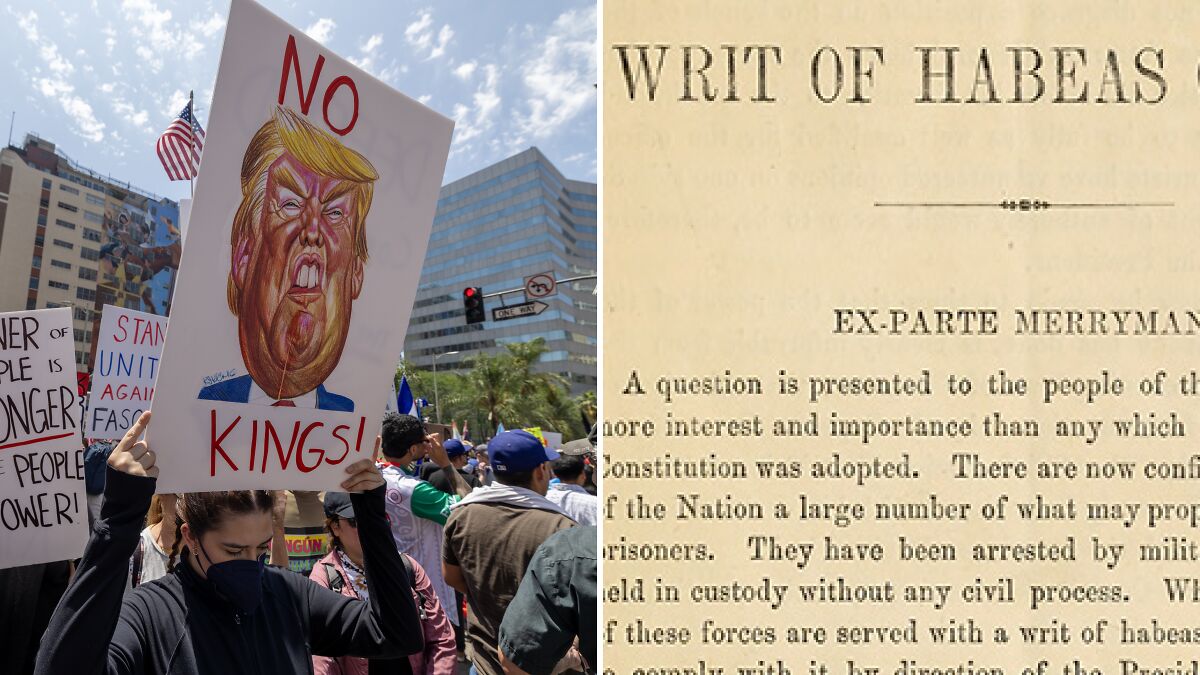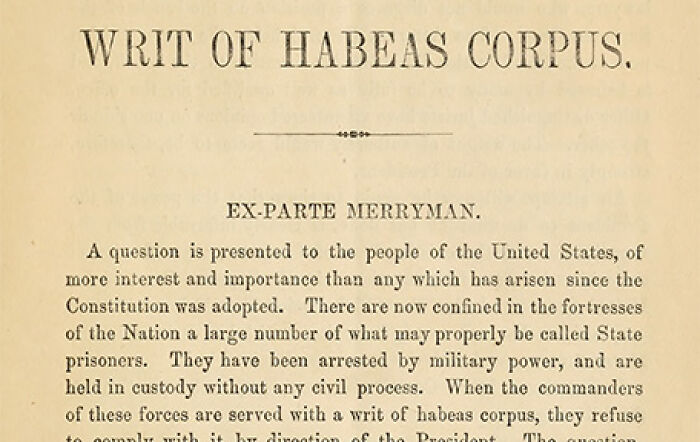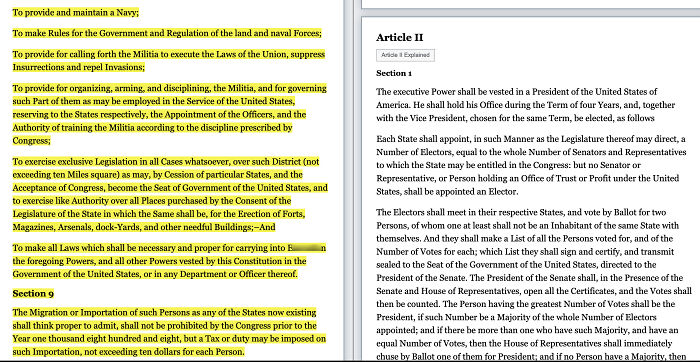Sections of the U.S. Constitution were recently removed from the Library of Congress’ official website. The missing text included key parts of Article I, namely sections 9 and 10, and part of Section 8.
These sections outline important limits on federal and state power.
Their removal sparked public concern, especially as it followed the firing of the Librarian of Congress by U.S. President Donald Trump in May.
- Key sections of Article I of the U.S. Constitution were removed from the Library of Congress website, including critical limits on federal and state powers.
- The Library of Congress cited a coding error for the disappearance, promptly restoring the missing sections and adding a site banner about the data issues.
- The removed sections included the Writ of Habeas Corpus, which Trump's administration controversially considered suspending to speed deportations.
Sections of the U.S. Constitution were removed from the Library of Congress’ official website
Image credits: National Constitutional Center
The Library of Congress said the disappearance was caused by a “coding error.”
On August 6, it issued a statement confirming the mistake and ensuring it would be resolved.
“It has been brought to our attention that some sections of Article 1 are missing from the Constitution Annotated website,” the library wrote.
“We’ve learned that this is due to a coding error. We have been working to correct this and expect it to be resolved soon.”
It has been brought to our attention that some sections of Article 1 are missing from the Constitution Annotated (https://t.co/zhCGgJPRVf) website. We’ve learned that this is due to a coding error. We have been working to correct this and expect it to be resolved soon.
— Library of Congress (@librarycongress) August 6, 2025
In addition, the website added a banner stating, “The Constitution Annotated website is currently experiencing data issues. We are working to resolve this issue and regret the inconvenience.”
By the afternoon, the missing text had been restored.
Still, the situation raised questions, since the sections that were briefly deleted directly relate to actions and language recently used by Trump and his administration.
Section 9, for example, includes the clause that the Writ of Habeas Corpus, which protects Americans from unlawful detention, cannot be suspended unless in cases of rebellion or invasion.
In May, Trump’s Deputy Chief of Staff Stephen Miller told reporters that the administration was “actively looking at” suspending habeas corpus to speed up mass deportations of immigrants.
The Writ of Habeas Corpus, which Stephen Miller said the administration was looking at suspending, was removed
Image credits: Chip Somodevilla/Getty Image
Homeland Security Secretary Kristi Noem also claimed in the same month that habeas corpus is “a constitutional right that the president has to be able to remove people from this country,” a statement that is the exact opposite of what habeas corpus entails.
Another removed section banned the U.S. government from granting titles of nobility. This was added to prevent the government from being influenced by European monarchies.
Trump has repeatedly called himself a “king” during his second term, including through official White House channels.
This prompted the “No Kings” protests on June 14, his birthday, where thousands opposed what they saw as authoritarian behavior.
Image credits: David McNew/Getty Images
Section 10 denies certain powers to the states that could undermine federal authority.
“States cannot enter treaties, coin money, emit bills of credit, pass ex post facto laws, or grant titles of nobility,” the Constitution states.
The disappearance followed Trump’s removal of Carla Hayden, the Librarian of Congress, who had been serving a 10-year term since 2016. Hayden was appointed by former President Barack Obama, and her dismissal was controversial.
The interim head of the library is under dispute: Trump has attempted to replace Hayden with Todd Blanche, his former personal attorney, who now serves as Deputy Attorney General. But the library staff has recognized Robert Newlen, Hayden’s deputy and next in line, as the acting librarian.
Some government workers found the “coding error” explanation hard to believe. One federal staffer described it as a “funny coincidence” to Rolling Stone.
Screenshots from the Internet Archive confirmed that the text was present earlier in the summer and disappeared only recently. Comparisons between archived and current pages clearly showed the missing content.
The missing text has since been restored and labelled a ‘coding error’
Image credits: Internet Archive
It is important to note that deleting sections of the U.S. Constitution on a webpage does not change American law. The Library of Congress is not the official legal custodian of the document.
But the site is a government resource that is used for legal references, and any changes can influence public understanding.











16
0